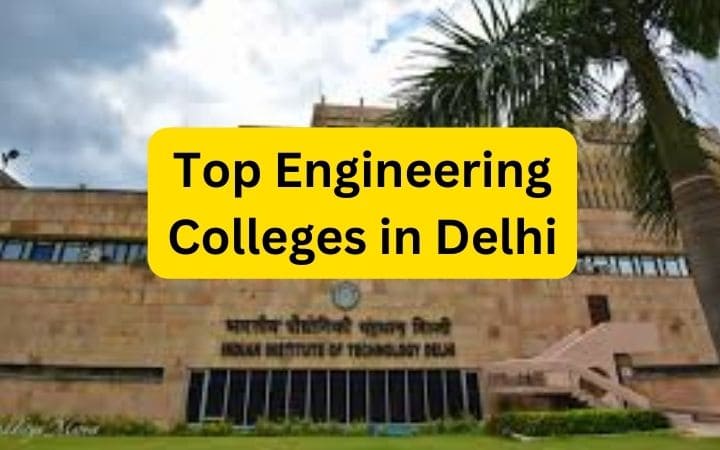Contents
Drainage Class 9 Social Science Geography Chapter 3 NCERT Solutions
NCERT Solutions Class 9 Geography Chapter 3 Drainage – Here are all the NCERT solutions for Class 9 Social Science (Geography) Chapter 3. This solution contains questions, answers, images, explanations of the complete chapter 3 Drainage (Geography) taught in class 9. If you are a student of class 9 who is using NCERT Textbook to study Social Science (Geography), then you must come across chapter 3 Drainage. After you have studied lesson, you must be looking for answers of its questions. Here you can get complete NCERT Solutions for Class 9 Social Science (Geography) Chapter 3 Drainage in one place.
See: NCERT Solutions For Class 9 Social Science Geography Chapter 1 India Size And Location
NCERT Solutions for class 9 SST Geography Chapter 3 Drainage Questions
Question 1: What is meant by the water divide? Give an example.
जल विभाजन से क्या तात्पर्य है ? एक उदाहरण दें।
Solution:
Any elevated area, such as a mountain or upland, separates two drainage basins. Such upland is known as the water divide. Ambala is located on the water divide between the Indus and the Ganga river systems.
कोई भी ऊंचा क्षेत्र, जैसे पहाड़ या ऊपर की ओर, दो जल निकासी घाटियों को अलग करता है। इस तरह के अपलैंड को वाटर डिवाइड के रूप में जाना जाता है। अंबाला सिंधु और गंगा नदी प्रणालियों के बीच जल विभाजन पर स्थित है।
Question 2: Which is the largest river basin in India? भारत में सबसे बड़ा नदी बेसिन कौन सा है?
Solution:
The Ganga basin is the largest basin in India. गंगा बेसिन भारत का सबसे बड़ा बेसिन है।
Question 3: Where do the rivers Indus and Ganga have their origin? सिंधु और गंगा नदियों का उद्गम स्थल कहाँ है?
Solution:
The headwaters of the Ganga called the ‘Bhagirathi’ is fed by the Gangotri Glacier and joined by the Alaknanda at Devaprayag in Uttaranchal. At Haridwar, the Ganga emerges from the mountains on to the plains. The Indus flows through Baltistan and Gilgit and emerges from the mountains at Attock.
गंगा के हेडवाटर को ‘भागीरथी’ कहा जाता है, जो गंगोत्री ग्लेशियर द्वारा पोषित होता है और उत्तरांचल के देवप्रयाग में अलकनंदा से जुड़ता है। हरिद्वार में गंगा पहाड़ों से निकलकर मैदानी इलाकों में जाती है। सिंधु बाल्टिस्तान और गिलगित से होकर बहती है और अटॉक के पहाड़ों से निकलती है।
Question 4: Name the two headstreams of the Ganga. Where do they meet to form the Ganga?
गंगा की दो प्रमुख धाराओं के नाम लिखिए। वे गंगा बनाने के लिए कहाँ मिलते हैं?
Solution:
Alakananda and Bhagirathi are the two headstreams of the Ganga. They meet at Devaprayag.
अलकनंदा और भागीरथी गंगा की दो प्रमुख धाराएं हैं। देवप्रयाग में मिलते हैं।
Also See: NCERT Solutions for Class 9 Geography Chapter 2 Physical features of India
Question 5: Why does the Brahmaputra in its Tibetan part have less silt, despite a longer course?
लंबे पाठ्यक्रम के बावजूद ब्रह्मपुत्र के तिब्बती हिस्से में गाद कम क्यों है?
Solution:
The Brahmaputra river, which is known as Tsangpo in Tibet, receives a very little volume of water in Tibet so it has less silt there. On the other hand, this very river when enters India it passes through such a region which receives heavy rainfall. As such in India, it carries a large volume of water and a larger amount of silt.
ब्रह्मपुत्र नदी, जिसे तिब्बत में त्संगपो के नाम से जाना जाता है, तिब्बत में बहुत कम मात्रा में पानी प्राप्त करती है, इसलिए इसमें गाद कम होती है। दूसरी ओर, यह वही नदी जब भारत में प्रवेश करती है तो ऐसे क्षेत्र से होकर गुजरती है जहाँ भारी वर्षा होती है। जैसे भारत में, इसमें बड़ी मात्रा में पानी और बड़ी मात्रा में गाद होती है।
Question 6: Which two Peninsular rivers flow through trough? कौन सी दो प्रायद्वीपीय नदियाँ ट्रफ से होकर बहती हैं?
Solution:
Narmada and Tapi are the two Peninsular rivers, which flow through the trough.
नर्मदा और तापी दो प्रायद्वीपीय नदियाँ हैं, जो ट्रफ से होकर बहती हैं।
Question 7: Discuss the significant difference between the Himalayan and the Peninsular rivers.
हिमालय और प्रायद्वीपीय नदियों के बीच महत्वपूर्ण अंतर पर चर्चा करें।
Solution:
The Himalayan Rivers The Peninsular or Deccan Rivers हिमालयी नदियाँ प्रायद्वीपीय या दक्कन नदियाँ
1. The Himalayan rivers rise in the snow-covered mountains as such they flow throughout the year. The mountains in which the Deccan rivers rise are not snow-covered. Hence they dry up in summer. हिमालय की नदियाँ बर्फ से ढके पहाड़ों में इस तरह उठती हैं जैसे वे साल भर बहती हैं। जिन पहाड़ों में दक्कन की नदियाँ निकलती हैं, वे बर्फ से ढकी नहीं होती हैं। इसलिए वे गर्मियों में सूख जाते हैं।
2. The Himalayan rivers flow in leveled Northern Plains. Therefore, they are quite useful for navigation and irrigation. The Peninsular rivers flow on the uneven rocky surface. Therefore they are neither navigable nor useful for irrigation. हिमालय की नदियाँ समतल उत्तरी मैदानों में बहती हैं। इसलिए, वे नेविगेशन और सिंचाई के लिए काफी उपयोगी हैं। प्रायद्वीपीय नदियाँ असमान चट्टानी सतह पर बहती हैं। इसलिए वे न तो नौगम्य हैं और न ही सिंचाई के लिए उपयोगी हैं।
3. The Himalayan rivers bring with them fertile alluvium which they deposit in the Indo-Gangetic Plains. The Peninsular rivers do not bring with them enough alluvium. As the current is swift so the deposition activity is negligible. हिमालय की नदियाँ अपने साथ उपजाऊ जलोढ़ लाती हैं जिसे वे भारत-गंगा के मैदानों में जमा करती हैं। प्रायद्वीपीय नदियाँ अपने साथ पर्याप्त जलोढ़ नहीं लाती हैं। चूंकि धारा तेज होती है इसलिए निक्षेपण गतिविधि नगण्य होती है।
4. Canals have been dug to use the water of these rivers for irrigation. As the terrain is rocky and the banks of these rivers are high, canals cannot be dug. However, dams are built to store the floodwater for irrigation with the help of small channels. इन नदियों के पानी को सिंचाई के लिए इस्तेमाल करने के लिए नहरें खोदी गई हैं। चूंकि भूभाग चट्टानी है और इन नदियों के किनारे ऊंचे हैं, इसलिए नहरें नहीं खोदी जा सकतीं। हालांकि, छोटे चैनलों की मदद से बाढ़ के पानी को सिंचाई के लिए स्टोर करने के लिए बांध बनाए जाते हैं।
5. Many important towns and centres of trade are situated on the banks of these rivers. Very few important towns and centres of trade are situated on the banks of these rivers. इन नदियों के किनारे कई महत्वपूर्ण नगर और व्यापार के केंद्र स्थित हैं। इन नदियों के किनारे बहुत कम महत्वपूर्ण शहर और व्यापार केंद्र स्थित हैं।
6. The porous soil absorbs a lot of water, which is later on used as groundwater by digging wells and tube wells for domestic and irrigation purposes. The rocky soil does not absorb any water. Hence no wells can be dug. All the water flows down the sea at one and the same time. झरझरा मिट्टी बहुत सारे पानी को अवशोषित करती है, जिसे बाद में घरेलू और सिंचाई उद्देश्यों के लिए कुएं और ट्यूबवेल खोदकर भूजल के रूप में उपयोग किया जाता है। पथरीली मिट्टी पानी को अवशोषित नहीं करती है। इसलिए कोई कुआं नहीं खोदा जा सकता है। सारा पानी एक ही समय में समुद्र में बह जाता है।
Question 8: Compare the east-flowing and the west-flowing rivers of the Peninsular plateau. प्रायद्वीपीय पठार की पूर्व की ओर बहने वाली तथा पश्चिम की ओर बहने वाली नदियों की तुलना कीजिए।
Solution:
East Flowing Rivers (पूर्व की ओर बहने वाली नदियाँ)
The Mahanadi, the Godavari, the Krishna, and the Kaveri are the main east flowing rivers of Peninsular India. These rivers drain in the Bay of Bengal. These rivers make deltas at their mouth. महानदी, गोदावरी, कृष्णा और कावेरी प्रायद्वीपीय भारत की मुख्य पूर्व की ओर बहने वाली नदियाँ हैं। ये नदियाँ बंगाल की खाड़ी में गिरती हैं। ये नदियाँ अपने मुहाने पर डेल्टा बनाती हैं।
West Flowing Rivers (पश्चिम की ओर बहने वाली नदियाँ।)
These rivers have a developed tributary system. Their tributaries are comparatively large in size. These rivers flow through not very deep channels. इन नदियों में एक विकसित सहायक नदी प्रणाली है। इनकी सहायक नदियाँ आकार में तुलनात्मक रूप से बड़ी हैं। ये नदियाँ बहुत गहरे चैनलों से नहीं बहती हैं।
The Narmada and the Tapi are the main west-flowing rivers of Peninsular India. These rivers drain in the Arabian Sea. These rivers enter the sea through estuaries. These rivers are devoid of developed tributary system. Their tributaries are quite small in size. These rivers flow in a trough or a funnel-like narrow but deep channel. नर्मदा और तापी प्रायद्वीपीय भारत की पश्चिम की ओर बहने वाली प्रमुख नदियाँ हैं। ये नदियाँ अरब सागर में गिरती हैं। ये नदियां मुहाना के जरिए समुद्र में प्रवेश करती हैं। ये नदियाँ विकसित सहायक नदी प्रणाली से रहित हैं। इनकी सहायक नदियाँ आकार में काफी छोटी होती हैं। ये नदियाँ एक कुंड या फ़नल जैसी संकरी लेकिन गहरी नहर में बहती हैं।
Question 9: Why are rivers important for the country’s economy? देश की अर्थव्यवस्था के लिए नदियाँ क्यों महत्वपूर्ण हैं?
Solution:
Rivers have been of fundamental importance throughout human history. Water from the rivers is a basic natural resource, essential for various human activities. Therefore, the riverbanks have attracted settlers from ancient times. These settlements have now become big cities. Make a list of cities in your state, which is located on the bank of a river. Using rivers for irrigation, navigation, hydropower generation is of special significance – particularly to a country like India, where agriculture is the major source of livelihood of the majority of its population.
पूरे मानव इतिहास में नदियों का मौलिक महत्व रहा है। नदियों का पानी एक बुनियादी प्राकृतिक संसाधन है, जो विभिन्न मानवीय गतिविधियों के लिए आवश्यक है। इसलिए, नदी के किनारों ने प्राचीन काल से बसने वालों को आकर्षित किया है। ये बस्तियां अब बड़े शहर बन गई हैं। अपने राज्य के उन नगरों की सूची बनाइए जो एक नदी के किनारे स्थित हैं। सिंचाई, नौवहन, जल विद्युत उत्पादन के लिए नदियों का उपयोग करना विशेष महत्व का है – विशेष रूप से भारत जैसे देश के लिए, जहां कृषि अपनी अधिकांश आबादी की आजीविका का प्रमुख स्रोत है।






